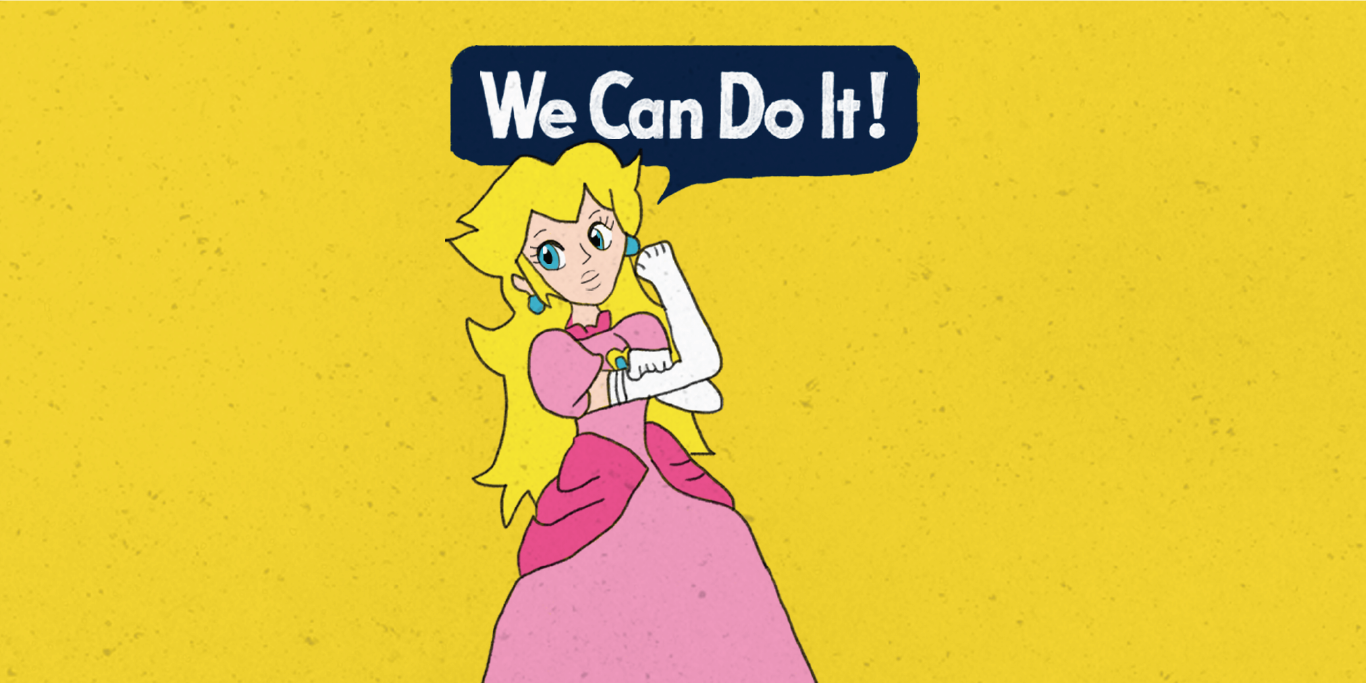When game designer Luke Crane asked a deceptively simple question on Twitter: “Why are there so few lady game creators,” he might not have expected an overflow of responses from women creators themselves. Using the hashtag #1reasonwhy, hundreds of female video game players and developers provided painstakingly detailed anecdotes that revealed the multifaceted sexism in the industry. As summarized by Mary Hamilton, a game blogger at The Guardian, they talked about “having their work dismissed and ignored, having designs for non-sexualized female characters rejected, having their clothing and appearance being used to dismiss them on gender grounds, and, at the more extreme end, experiencing sexual harassment at conferences.”
On the one hand, these women’s accounts demonstrated that there are, in fact, “lady game creators” in the industry. Yet, their frustration and anger show how powerless they feel against the rampant discrimination and harassment within the videogame world, partially accounting for the comparative lack of female game players and developers.
There are many complex, structural reasons why the industry is predominantly male. While lack of female developers is a classic explanation of the problem, it does not reveal the full picture.
A closer inspection of #1reasonwhy reveals more subtle reasons for women’s absence from gaming. According to Margaret Robertson, director of development studio Hide&Seek, the surprise elicited by #1reasonwhy shows “how often women in the game world don’t feel comfortable drawing attention to themselves—and especially drawing attention to themselves as a woman.” As a result of women’s “self-censorship,” the image of the gaming industry becomes even more disproportionately male.
Let us not forget the obvious factor—sexualization—that excludes women from the gaming industry. Hypersexualized female characters in video games serve as silent hints to women that this is a boys’ world. Sexualization also permeates the culture among developers outside the games they design. Hiring female topless models for a professional networking event and sponsoring parties with S&M themes are common practices among some companies, which further prevents aspiring female developers from gaining respect, much less recognition.
Women comprise around 20 percent of global game developers. This dismal statistic appears even worse when it’s compared with the rapidly growing gaming industry and the wide gender pay gap between men and women within it. Furthermore, it gives rise to a digital locker room culture, which allows male-dominated, sexist “jokes” to permeate the field and deter women from entering in the first place. In a sense, this phenomenon is a closed cycle.
How, then, can we change it? The answer requires us to go back to the beginning of the gaming industry, when video games were surprisingly not associated with masculinity.
In the 1970s and ’80s, the nascent age of the gaming industry saw the rise of gender-neutral games like “Pong,” “King’s Quest,” and “Space Invaders,” all of which appealed to a diverse audience. It wasn’t until 1983, following a massive recession in the video game industry, that perceptions began to shift.
After the crash and initial market research, Nintendo led the wave of innovation by marketing toward a specific demographic: young boys under age 10. Five years later, it began targeting young boys ages 10-15. As other companies followed suit, video games became increasingly associated with masculinity, a concept that manifested in subtle and overt forms of sexist messaging. Such messaging took the form of hypersexualized female bodies, over-glorification of male heroes, and in one extreme advertisement, a boyfriend who locked his girlfriend in a closet in exchange for a date with fictional character Lara Croft.
During the ’90s, television began to attribute mass shootings to violent video games. Shooter games, popular among male players, received a disproportionate amount of attention due to their connections to young, male mass shooters. When the general public equated the term “video games” with shooter games, other hugely successful games such as Candy Crush or The Sims, which have gender-balanced or predominantly female player bases, no longer fell under the definition of “gaming.” The result was the systematic exclusion of female players and developers from gaming circles, as well as the trivialization of “female-centric” games.
In recent years, companies have begun to target female video game players. They’ve realized that a marketing strategy that excludes 50 percent of the population is simply not effective. Yet, while they shifted their focus from men to women, they did not adjust their fundamental way of thinking about marketing. They continued to cater toward a specific demographic as opposed to addressing different intersections—only this time, they targeted women by using female celebrities, such as Beyoncé, in their ads.
This strategy has received pushback from some male game players. Years of male-focused marketing have endowed them with a sense of entitlement to the world of gaming. Some even began to envision themselves as the protectors of gaming against the “invasion” of female players. When powerful female characters and corporate leaders emerged in gaming companies, some male players felt marginalized—feelings that can be radicalized online. In fact, Gamergate, a notorious harassment campaign targeting female game developers with doxing (revealing private information about an individual), rape, and death threats, climaxed via online forum 8chan.
Providing a comprehensive solution to a problem as complex as sexism within the gaming industry is difficult. There are a few things, however, that companies can focus on. First, they need to fundamentally understand that female employees are an integral part of their success. Their opinions, whether on long-term projects or the work environment in general, are valuable and shouldn’t be dismissed based on gender. Second, they need to adopt a new marketing technique that includes rather than divides. Instead of emphasizing the gendered aspect of objects or actions, advertisements can feature a diverse group of individuals enjoying the companies’ products and emphasize their joy and excitement. Through finding a common factor which unites everybody, regardless of gender or any other identity factors, companies can include everybody within their market, and thus reduce sexism within gaming.
Image Credit: Neha Malik






[…] Using the hashtag #1reasonwhy, hundreds of female video game players and developers provided painstakingly detailed anecdotes that revealed the … Source link […]